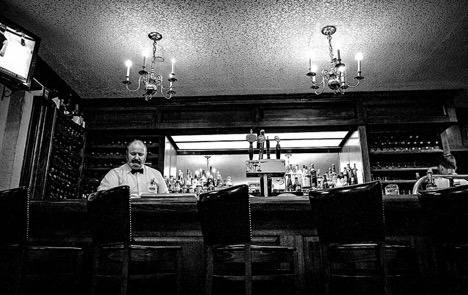Peter Luger, Est. 1887, L.I. New York. Photo by Paul Piasecki
When actress and onetime mistress to English royalty Lillie Langtry, entered Keens Steakhouse in 1905, she presumably had one goal: eat a delicious steak. Keens, then a men’s-only establishment, was already well known for its Mutton Chops and Porterhouse steaks. Unfortunately for Ms. Langtry, she was refused entry despite her desire to taste the already-famous dish.
Founded in 1885, Keens is one of three other New York steakhouses, Delmonico’s, Peter Luger, and The Old Homestead that have been operating since the 1800s. The Palm, established in 1926, followed the same successful path to longevity.
So what makes New York steakhouses steaks taste so ridiculously good that these restaurants have been in business for so long? What is that keeps people coming back for this seemingly simple meal?
Beyond the obvious fundamentals of good management, quality of the meat and the skills of the chefs preparing it, there is an ingredient that goes unnoticed but makes all the difference when separating a good steak from a great steak. From Midtown to Chelsea to Downtown and Brooklyn, New York Steakhouses that include the iconic five, all baste, drizzle and glaze their fastidiously-prepared steaks with butter.
Before we get into the incredible complement of butter and steak, we should explore the magic of searing, also known as the Maillard Reaction. For you non-food scientists out there, the Maillard Reaction is the chemical reaction that occurs between protein, sugar (ribose in meat) and heat (around 300 degrees F). The Maillard Reaction explains why our ancestors first started applying heat to food in the first place – because it creates layers of complex and pleasing flavors. By the way, the Maillard Reaction is non-enzymatic browning. We see things turn brown as they spoil also – this is caused by an enzymatic reaction.
Now to butter. On its own, butter has a rich and creamy texture in our mouths and it has unique melting properties. Butter, unlike many fats, melts at slightly below body temperature; around 95 degrees. As it melts, it delivers a burst of buttery flavors which includes compounds like lactones, fatty acids, and diacetyl – all contributing to that buttery taste we love.
When butter is added to other foods it really begins to shine. Butter’s primarily made up of butterfat – typically ranging from 80% to 86% of its entire weight. Fat absorbs, carries and melds flavor better than anything else known to man. It is THE go to enhancer of flavor and taste in general. Not convinced? Think about the last time you compared the taste of low-fat crackers or ice cream to the high-fat varieties. I rest my case.
Chefs knew then as they know now, that the completely gratifying flavors and aromas created by the Maillard Effect cast upon a USDA prime, dry-aged, perfectly seared steak could only be flawlessly transported to our taste buds and noses by coating the steak in butter. So the next time you find yourself in New York and eating a steak or perhaps thinking about preparing one like a pro, remember the butter.
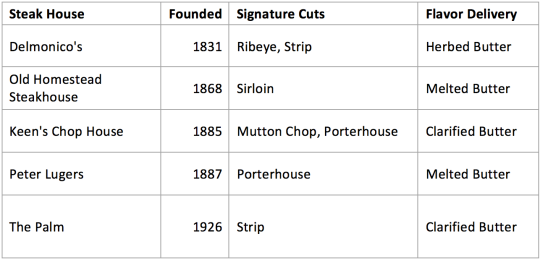
As for Lillie Langtry, she sued and won the right to enter and dine at Keens. Keens acknowledged defeat and created a special menu to honor Ms. Langtry. It included Green Turtle Soup, a filet of English Sole and Roast Partridge. Ms. Langtry purportedly swept into Keens shortly thereafter in her feathered boa and proceeded to order Keens’ famous buttered mutton chops instead.

Pine Street Market’s Dry Aged, Brasstown Beef Sirloin: Seared, Salted and Glazed with Slow-cultured Banner Butter.
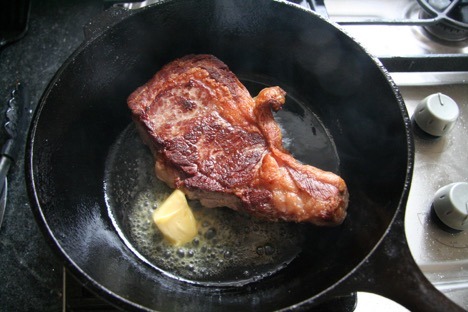
The Maillard Reaction in Action
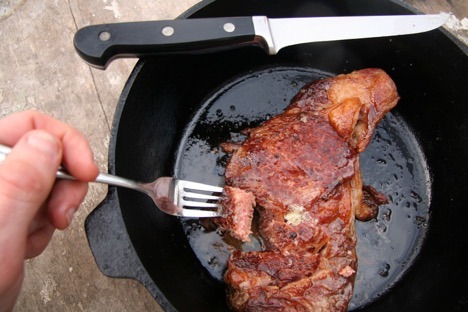
Calling on the Uber of Flavor
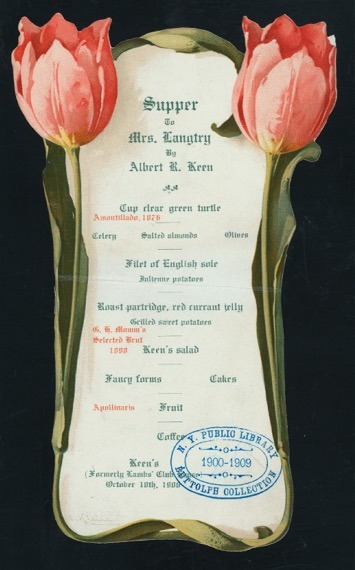
Lillie Langtry Honorary Menu
Notes:
http://www.cookingchanneltv.com/videos/keens-steakhouse.html
http://abcnews.go.com/abcnewsnow/GMANow/story?id=6402436&page=1
http://www.foodnetwork.com/videos/porterhouse-at-peter-luger-0242247.html
Old Homestead Steakhouse Cut Above Rest Kobe Beef
http://www.today.com/food/steal-chefs-scrumptious-steak-recipe-1D80351343
https://digitalcollections.nypl.org/items/510d47db-8033-a3d9-e040-e00a18064a99
http://www.keens.com/AboutKeens/History/
http://hypertextbook.com/facts/2003/JessicaCheung.shtml
